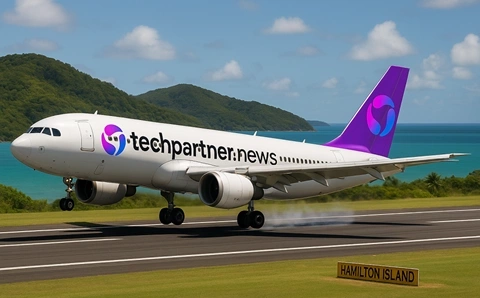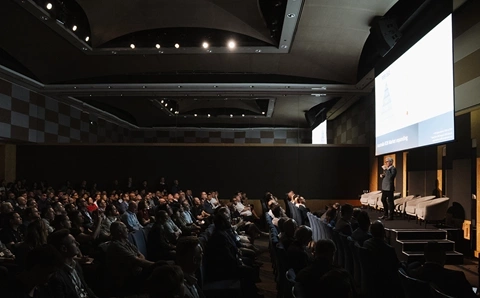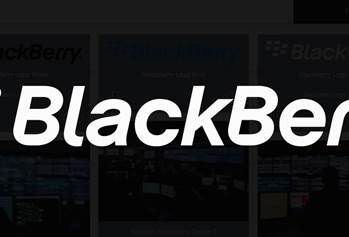The Royal Zoological Society of South Australia, which runs the historic Adelaide Zoo, was in dire need of future-proof infrastructure. CRN’s Tony Yoo spoke to the zoo’s ICT manager, Ashlen Naicker, and Subnet’s service delivery manager, Mat Clark, to find out how the long-time IT partner came to the zoo’s rescue.
Tell us about the zoo…
Ashlen Naicker: Adelaide Zoo forms part of the Royal Zoological Society of South Australia. We’ve also got Monarto Zoo, which is the largest open air zoo in the world at a thousand hectares. The lion enclosure at Monarto alone is the size of Adelaide Zoo. On average, we welcome 500,000 visitors here a year.
Adelaide Zoo is the biggest “pay-to-see” attraction in South Australia and is 137 years old. It’s the only zoo in the southern hemisphere to house the great panda. We also had the oldest flamingo in the world, which just passed away last year.
How did the relationship with Subnet start?
Mat Clark: We’ve been dealing with the zoo for a little over five years. It was an opportunity presented to us by Cisco. We put in a bunch of switching and developed their virtual environment from there.
It’s been ongoing ever since: we’ve had the telephony, we’ve had the networking, we’ve had server infrastructure, and wireless as well. The relationship has just grown and grown since inception.
Ashlen: I started at the zoo in 2012. At that stage, there was no ICT manager. After we had a leadership change, the new CEO came and restructured the zoo to operate like a real business. In doing so, the ICT manager position was created and that’s how I got the job. I inherited Subnet with the zoo.
Mat: Interestingly, we actually interviewed Ashlen for the position of ICT manager. We had John Wells, services manager at Subnet, standing in as the ICT manager here for about six months. He interviewed Ashlen for the job and went, “Here are the keys”.
Ashlen: Subnet’s gone to the extent of actually doing work almost free of charge for the zoo before my time. I always acknowledged that. They provided two weeks of service for absolutely no cost. When the zoo was in a bit of a situation, they were here, no questions asked. They never brought it up ever. The otters here are actually sponsored by Subnet.
Tell us about the latest work…
Mat: IBM is the main server hardware they use here at the zoo, through leasing. We’ve just put in a whole bunch of new IBM kit. They’ve got a DR environment that is in different buildings, but still inside the zoo. We cover a field of 25 servers.
Ashlen: Funding has always an issue at the zoo. When I came in [in 2012], we, at that stage, had shoestring budgets. It was a lot of proposals and winning people over at the zoo, showing them the benefits of new architecture.
It wasn’t just IBM that we approached. We approached a range of vendors and IBM really came to the party with the best pricing. The service was great from them as well. So we proceeded with them.
The old, existing leased infrastructure still has another year left on it, so it was good kit. It was Cisco kit and we converted all into a disaster recovery zone. So with our plan of recycling of equipment, the [recently deployed] IBM equipment will, in the next round, become the disaster recovery, and new IBM equipment will come in again. We’ll always have that cycle going. Doing that, we’ve decreased our lease costs.
I’ve checked disaster recovery every two weeks and we’ve decreased downtime to almost zero percent at the zoo.
Next: supporting a 24-7 business
Do you use Veeam for backup?
Mat: Yes, Veeam is the main backup we use here. We physically log in and check all of the software.
Ashlen: Veeam facilitates two things. It’s the backup, but it’s also the disaster recovery. The machines are always in sync with each other. They’re something like only two minutes apart. That was an operation that took us about three weeks.
Is the zoo a 24-7 business?
Ashlen: We are. We’re a 24-7, 365-day business. Uptime is crucial for all our admissions and security camera systems for animals. Even the animal support systems are on our infrastructure.
With the building management system, we monitor things like water usage, economy, and power. We’re a conservation organisation so we do rely a lot on those figures. After introducing the new infrastructure, we’ve saved over $400,000 in electricity alone.
We have come a long way, with a bit of leadership and funding. A bit of give and take, here and there.
Something to mention is the switching technology we’re using. We run, on any given day, 13 networks. We’ve got services running that are dedicated on those networks. The way it all comes together is quite amazing. I’ve had other Cisco gentlemen coming in to have a look at our set-up. They took their hats off to the configurations and the way we do things over here.
We treat the switching technology at an enterprise level, not as a general corporate business. I do everything on the enterprise level. If I’m doing switching, it’s got to be Cisco. It’s got to be the 37 series. It’s got to have longevity. I don’t mind paying the extra now to reap the rewards later down the line.
In the past, when we had little funding or funding was tight, we invested in poor switching technology. Over the years, I’ve got a pile of scrap metal – the zoo noted that. They said, “You know what. We’ll do things properly. We’ve seen the benefits.”
The system – touch wood – has not gone down in the last two years. The only time we did go down was when we turned it off to replace parts and to see how it would respond.
How does the new infrastructure improve the zoo?
Ashlen: During my first year, I worked with Subnet to get the structure sorted out, to make sure it was bulletproof. We achieved that goal. In year number two, the idea was to buy this data centre.
I want to direct all the benefits to the visitor. We said, “Okay, let’s just lay a big wireless [network]. Let’s lay sound-scaping around the zoo but we want it centrally controlled.” So all of that just comes down that one pipe that we laid. We want to give our members more as well, so we wanted to provide online tours or virtual tours around the zoo, and four-dimensional cinema robotics holograms.
All those [initiatives] will be using our existing infrastructure. So it was paramount that we got it right in the beginning. When we first started those projects, there were financial constraints. We’ve had to crawl our way out of situations and we’re at a very good standing now. We’ve saved quite a bit of money investing in the new technology.
For example, in the past, staff would have to go from Monarto to Adelaide or Adelaide to Monarto. We’ve now got Microsoft Lync running, which facilitates all these meetings. We’ve saved on fuel, vehicles and time spent on people driving. Over time, these savings add up.
We’ve seen those benefits and now the zoo is investing more and more into ICT. We don’t look for the plaster solution any longer. My take is always we go big or we don’t do it at all. We want to do it for the next 10 years, not for the next two.
Next: the challenges
What were some of the challenges?
Mat: The zoo has some flaky power issues. We have had some instances where it has failed across to [DR] because the power has just gone out. We’re on a 24-7 service and when Ashlen called us up we had people out here within 30 minutes sorting out what was going on.
We have an engineer always on standby but that’s more of a reactive service as opposed to the monitoring and stuff. We also had the phone system drop a disk just recently. That’s no longer covered by Cisco and they said, “Can’t help you”.
Ashlen: I have to take my hat off to Subnet. They express-freighted parts out of Melbourne. We only had about five hours of downtime. The [Subnet] guys all reacted, from the desktop engineer right to the senior guys. They were all ready and good to go. We all had ideas. We had solutions and backup solutions, just to get that phone system up and running. They treated it far more critically than I would. I have to take my hat off to them on that.
Service turnaround time with Subnet is excellent. I’ve worked around the world with hosted and managed service companies. I haven’t found one that’s so personal, where they deliver a service on that level – not just “We were here for five hours, there’s your invoice. End.” The [Subnet] guys would see the job to the next day.
One of the Subnet engineers that I’ve worked very closely with, Kris, has been my advisor. He’s been very influential with the zoo. His advice, I think, is paramount to our success as well. We work very closely together [with Subnet staff]. I guess it’s all the late nights which mean we’ve developed a bond.
What’s coming up?
Ashlen: We recently did a complete network infrastructure audit. We’re under lease with Cisco with our current infrastructure until June. We’re at that critical phase now.
With the help of Subnet business development manager Mark Johnson’s sales team and Mat and the engineers, we’ve come up with a list of materials and pricing. Mark’s been really great with the negotiating with Cisco. We’ve got three options at our disposal. We know that we can’t get it any better than that – I’ve done the maths and I’ve made the calls myself.
After we purchase these items, [Subnet will] play a bigger role in setting them up. This time round, we’re going to iron out a few old gremlins in the systems as well as in the switching technology.
We’ve got a long-term plan for the zoo as well. Everything we do now needs to make room for the next 10 years. For example, we’re doing 10Gbps fibre runs between the two switches in order to support our infrastructure.
Zoo-wide, we’re now at a phase where we’re undergoing something called a master plan, as approved now by the board and leadership. According to that plan, Adelaide Zoo is going to change radically. We’ll have upgraded facilities. The services that we’re going to be offering are really beyond first world. We’re looking to take on the Singapore Zoos and surpass them, in technology especially.
The relationship seems to cover both managed to professional services. Is that right?
Mat: Yes, it is, we go from high-end projects to sitting and changing cable.
Ashlen: It’s a robust and diverse relationship. We are a large-scale enterprise operation. But on-site, it’s just myself and my helper. I rely on the 35 people at Subnet. On-site, I don’t look like much but I’ve really got a massive team behind me. Even when I’m not here, I can walk away and trust that Kris and the boys have got it all under control.
THE CUSTOMER
Zoos South Australia
Established: 1883
Locations: Adelaide, Monarto
Industry sector: Wildlife, Conservation
THE SUPPLIER
Subnet
Established: 2000
Headcount: 30+
Location: Forestville, South Australia
Specialty: Managed services, professional services, networking, cloud
THE PROJECT
Situation: Adelaide Zoo didn’t even have an IT team, and its infrastructure was in dire need of updating
Technology deployed: Networking, servers, backup, telephony
Vendors: IBM servers, Veeam backup & DR, Cisco networking, Microsoft Lync
Outcome: Subnet ushered in a new era of technology by overhauling the zoo’s server farm, implementing better networking and unified communications, and improving backup and disaster recovery








.jpg&h=142&w=230&c=1&s=1)



.jpg&w=100&c=1&s=0)
_(8).jpg&w=100&c=1&s=0)










